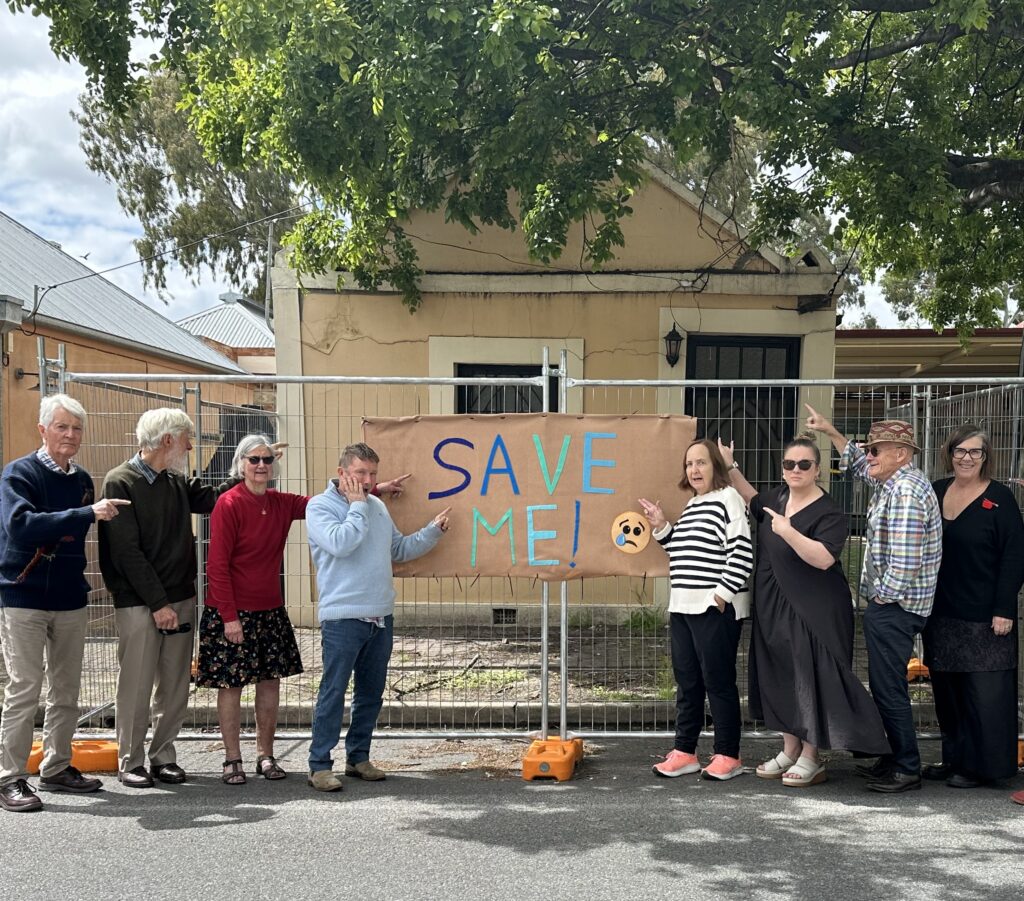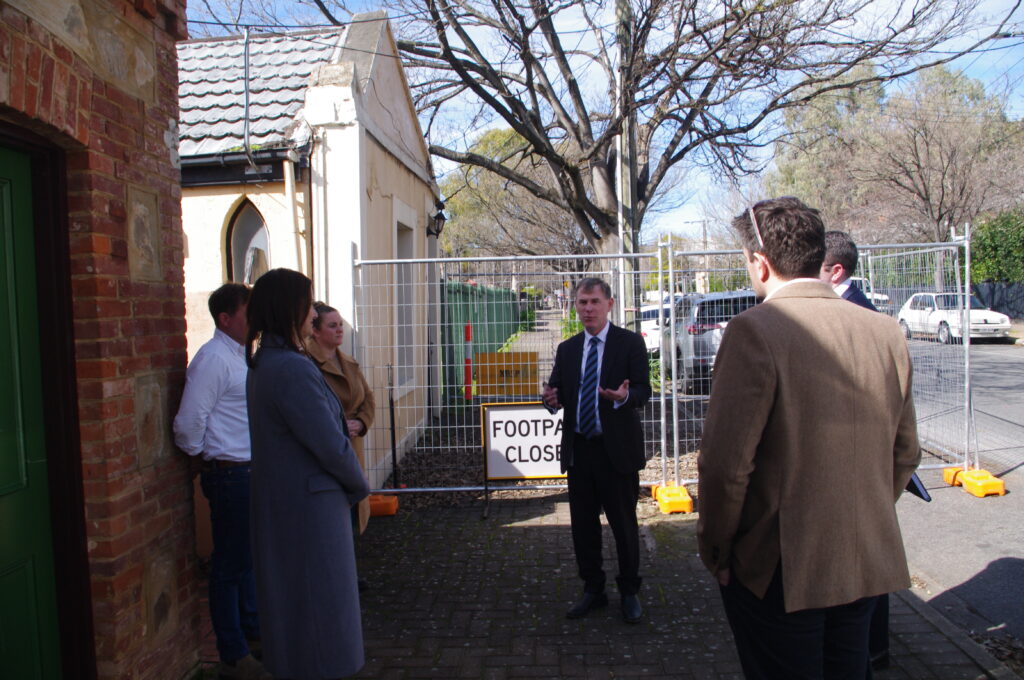
! UPDATE ! The Council Assessment Panel refused to approve demolition of 69 High St Kensington during their meeting on 20th October!! A WIN but the old Kensington elementary school building is NOT SAFE YET, as the applicants (owners) could appeal to the Environment Resources and Development Court to overturn or alter the CAP’s decision.
The Kensington Residents’ Association is continuing to pursue State Heritage listing for 69 High St. We have lodged a very detailed and extensively researched nomination with Heritage SA seeking State Heritage status for this neglected Kensington gem that dates from 1847.
To ensure neglected historic properties are better protected in the future, you can write to the Minister for Planning, the Hon Nick Champion (pictured below outside 69 High St), requesting that the recommendation from the Expert Panel for the Planning System Implementation Review (2023) regarding demolition by neglect is fully implemented as a matter of urgency. See page 225 of this report.
The Council Assessment Panel is obliged to follow the rules of the State Government’s Planning and Design Code, so this change to the code is crucial.
Write to the Minister at MinisterChampion@sa.gov.au .

Why is the building at 69 High Street so important? It is one of the oldest elementary school buildings in South Australia and one of the oldest single-room adaptive colonial buildings in existence. Built in 1847 it is the oldest still-standing example of a school associated with the Congregationalist movement championed by John William Roberts (1794-1875), who also built the 1848 Congregationalist Chapel, located in Maesbury Street beside Pioneer Park. The school at 69 High Street was specifically linked to Roberts’ ‘dissenter’ views and his desire to create Kensington Village as a model community based on the ‘Voluntary Principle’.
From the Book of Assessment for the Town of Kensington and Norwood 1849, the building was described as a ‘School Room’ and the occupier was Septimus Webster, a school master. An advertisement from the SA Register on 18 August 1856 shows that Mr Septimus Webster advertised for students for the Kensington Elementary School at the site.
Sandy Wilkinson, Heritage Consultant, in conjunction with Urathane Solutions, provided a report to the Council Assessment Panel at its May 2025 meeting when the Panel first considered the demolition application. The report outlined the heritage value of the building and argued that the building is not irredeemably beyond repair and should not be subject to demolition approval under the Planning and Design Code. The owners of 69 High Street have apparently has ignored this advice and are proceeding with the demolition application.
The Kensington Residents’ Association calls on the State Government to implement the 2023 recommendations from the Expert Panel for Planning Implementation Review, by changing the Planning and Design Code immediately to address “demolition by neglect”. The Expert Panel recommended that Councils be given the power to issue maintenance orders for Local Heritage Places and also to allow Council Assessment Panels to consider the cause of deterioration in demolition assessments (Reform 15: “To exclude deterioration due to neglect as a supporting factor for demolition”).
“The Panel heard that there is a penchant for local heritage places to be neglected and left to deteriorate to enable ease of their demolition in accordance with Performance Outcome 6.1 of the Code. The Panel considers this needs review to ensure the local heritage places are not being neglected and left dilapidated.” (Final Report and Recommendations: Expert Panel for the Planning System Implementation Review, page 225)
The South Australian Government may support this recommendation, but it has yet to be implemented.
If we lose the historic elementary school building, an important part of the story of South Australia will be lost forever. SOS! Save Our Schoolhouse!
